#(scene is from The Big Sleep (1946))
Explore tagged Tumblr posts
Text
people reblogging/liking my old art posts while I'm working on new stuff but having nothing to post yet:
me:
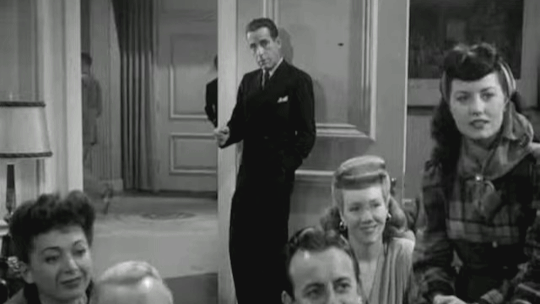
#thank you-- it's a huge motivator when progress feels slow & I go so long without posting🖤#I do update the 'Progress Queue' pinned post almost every day though if you guys want to know what I'm working on#(scene is from The Big Sleep (1946))
25 notes
·
View notes
Text
Part 3, Chapter 1

Summary: After the events of S3, Matt Murdock is trying to once again balance life as a lawyer and a vigilante. But he’s been scarred by loss and betrayal - will a mysterious new neighbour help him heal? Or will her secrets drag him back into the darkness?
Notes: This is a slow burn romance with an original female character, told in 3 (maybe 4??) parts. There is mystery, intrigue, action/violence and angst - all the good stuff!
Also available on AO3 and Wattpad
Masterlist
Reference pics
————–
Part 3, baby! Lets go!
————–
PART 3
Chapter 1
Just over a week later, Calina’s new found resolve to do ‘whatever it took’ was put to the test.
She’d left the house early that morning for a run, after waking well before dawn. She’d tossed and turned for an hour trying to fall back to sleep before finally admitting defeat, so she’d gotten up, shoved on her workout gear and snuck out of the house. Her time was better spent exercising and improving her stamina instead of chasing elusive sleep. She’d spent too many weeks cooped up inside and sedentary - either in Matt’s apartment or in the Widows' base - and she needed to be in better shape for the battles to come.
She checked her watch as she slowed from a jog to a brisk walk on the long driveway leading to the house. She noted the time and frowned - she was minutes off her usual speed. She definitely needed to work on that.
She made her way around the side of the house to the back door. It led straight into the kitchen, where she hoped another early riser had already started brewing a pot of coffee. She was desperate for a caffeine hit before she grabbed a shower. There’d been too many sleepless nights over the past week and she was operating at a constant low level of exhaustion.
It was another thing she needed to work on. She just wasn’t sure how she could banish her insomnia without Matt beside her. She hadn’t had a decent night’s sleep since the one they’d spent together at Christmas.
She approached the back door, and paused at the sound of raised voices within. It was still early - and most of the Widows had started to enjoy sleeping late in the mornings - but judging from the racket, every Widow in the house was wide awake, sitting around the table and arguing with each other.
Something had happened.
Calina quickly yanked open the door…and the room went quiet.
Weird.
“What’s going on?” she asked slowly.
“You’ve infected them all with your romantic bullshit,” Yelena replied from her perch on the countertop. “That’s what’s going on.”
“What?”
“I found Volkov’s money man,” Anya said, seemingly changing the subject. She was sat at the table with the rest of the Widows, her laptop open in front of her.
That news was a more effective energy jolt than caffeine. Calina perked up and squeezed onto the bench beside Katya. “Who is it?”
“Salvatore Ranieri. The grandson of a wealthy Count based in Naples.”
Calina frowned. “Why would a member of the Italian aristocracy be funding Volkvo’s faction?”
Anya leaned back in her chair and began explaining. “The Ranieris used to be a big deal, but now they’re a family in decline. Not in terms of wealth, but in terms of relevance - when Italy became a republic in 1946, the recognition of nobility ceased. Salvatore probably spent his whole life hearing stories from his Grandfather about all the influence and power their family used to wield, and now they have none. From what I’ve been able to gather, its left Salvatore deeply angry and disaffected.”
“Basically, he’s a narcissistic man-child with a massive chip on his shoulder,” Katya summarised.
“Sounds like an easy mark for Volkov,” Calina added.
“Exactly,” Anya continued. “Being part of a secret organisation that seeks to manipulate world events from behind the scenes would definitely appeal to Ranieri. There’s also the small matter of him being a misogynistic man-whore.”
“Why does that matter?” Calina asked, not seeing the link.
“A misogynist, with a rumoured sadistic streak and a thirst for control and dominance would probably get off on the idea of ‘owning’ a group of mind-controlled women.”
“Gross,” Inessa said.
Calina agreed. But she also agreed with Anya’s assessment. She wouldn’t be surprised if Volkov had sweetened the deal with Ranieri with the promise of his very own Widow. A man who saw them as nothing but assets wouldn’t think twice about trading them away as part of a business venture.
“So what’s the plan?” she asked, looking around the table. Several of the women dropped their eyes and looked away.
Again…weird.
“He’s too high profile to kidnap,” Yelena said. “Definitely too high profile to kill. Misogynistic womanisers are apparently popular with the Italian tabloids - especially when they’re handsome, rich, and party with movie stars. If something happened to him, the press would be all over it and the authorities would get involved. We need stealth for this one.”
“What did you have in mind?”
“We need to get close to him - close enough to clone his laptop and phone, and plant a few trackers - but in a way that completely avoids suspicion.”
It sounded a lot like the missions that Calina used to undertake for the Red Room. It was her speciality, in fact - getting close to a mark in order to steal their secrets, then leaving undetected. Which meant the strange tension in the room, and the lack of eye contact from her sisters, suddenly made a whole lot more sense. “You need me to do it,” she guessed.
Yelena sighed, and nodded. “Ranieri’s hosting a party at his family’s villa next month. It’s our best chance to get access to his private rooms. You’re fluent in Italian, and dressed in one of the tacky Eurotrash outfits that he likes, you’ll be guaranteed to catch his eye. You can do this in your sleep, Calina.”
“But that was before she had Matt,” Inessa said firmly. A few of the other Widows nodded in agreement.
Yelena rolled her eyes. “See?” she said to Calina. “Romantic bullshit.”
“It’s not bullshit!” Inessa objected. “You can’t expect her to hookup with some random guy when she’s in a relationship with someone else.”
“No one’s asking her to sleep with him! Just flirt. Maybe a kiss or two. Enough to entice him up to his room where she can sedate him and get to work.”
Calina tuned out the argument as more of her sisters leapt to her defence. It was sweet of them to care, but this was her decision. And she agreed with Yelena. Not that romance was bullshit…but that there was no room for it here. The mission came first. Bringing down Volkov came first. She’d resolved to do whatever was necessary to gain her freedom and return to her life with Matt.
And this was necessary.
Besides, in the grand scheme of things, it was a small sacrifice to make. It would be a relatively low-stakes mission. A simple honey trap, similar to dozens that she’d pulled off in the past.
“Maybe it’ll be good for her,” Yelena said, her arms crossed and an obstinate expression on her face. “She fell too hard and too fast for Murdock. A little distance would do her good.”
“Love is not a potato, Yelena,” Inessa objected.
“What the fuck does that mean?”
“Its a proverb. ‘Love is not a potato, you can’t just throw it out of the window’.”
Yelena groaned. “Not you too! We get enough of those asinine sayings from Calina.”
“I’ll do it,” Calina said, ignoring Yelena’s jibe.
“What?” Inessa said.
“Are you sure?” Katya asked quietly.
“Yes,” she answered. “This is our best - our only - lead at the moment, correct?” she asked the wider group.
“Yes,” Anya and Yelena responded at the same time.
“Then let’s see where it takes us.”
———
One month later…
Matt jogged up the stairs of his apartment building, checking the readout on his watch as he did so.
3:22pm.
Plenty of time.
The meeting was in an hour and it wouldn’t take long for Matt to grab the file from his apartment and make it back to the office. Karen had offered to get it, but it was Matt’s fault for forgetting it in the first place, so he’d made the trip. His friends were bending over backwards to be nice to him these days, but he didn’t want to take advantage of their sympathy. He just wanted to get on with his job. Do his part for the firm, and keep himself busy.
Keep himself distracted, as much as possible.
His life had pretty much returned to the way it was before Calina had entered it. He worked all hours of the day. He suited up and patrolled the city at night. He went for drinks with his friends - he’d even played fifth wheel during a double date with Karen, David, Foggy and Marci. He was living his life day-to-day, just trying to get by.
But all the while…he missed her.
Her absence was a constant. A low level discomfort, like an itch that couldn’t be scratched. A forgotten word on the tip of the tongue. An ache in a phantom limb.
He tried to hide it from his friends. He tried to plaster over those feelings of loss with his diligence at work and his willingness to be sociable…but they saw through it, of course.
Hence, the sympathy and kindness.
“Guten tag, Matthias.”
Matt slowed his brisk walk through the foyer to return the old woman’s greeting. “Afternoon, Mrs. Schneider.”
She paused in the act of unlocking her front door and rattled off a series of words in German. Matt only caught one of them: ‘Calina’.
He sighed and shrugged. “I don’t know where she is. And I don’t know when she’ll be back,” he responded, figuring one of those statements would answer her question.
And it was the truth. He didn’t know where she was. Or what she was doing. How close she and her team were to gaining their freedom, or if she was safe…
He didn’t know anything, because he hadn’t heard from her in over a month.
39 days to be precise.
He was back to counting again.
New Years Eve had come and gone without her. As 2017 had ticked into 2018, a part of him had held out hope that she would appear. That he’d get another surprise visit, like the one at Christmas.
Valentine’s Day was just around the corner, and that same hopeful part wondered if he would see her then.
As if they could punctuate this separation by marking the holidays.
It was a foolish thought, but it kept him going. The slim hope of seeing her - even if only for a night or just a few hours - helped him get through each passing day. And he knew that when February 14th came and went without her, he would pin his hopes on the next big occasion, whatever that was.
Probably St Patrick’s Day. The most romantic day of the year. She was bound to show up for that.
Matt huffed out a laugh at the sarcastic thought, and Mrs Schneider gave him a questioning look. He shook his head. “Its nothing. Enjoy the rest of your day.” He gave her a small wave goodbye, and made his way to the elevator bank.
Just as he reached his floor, his phone rang.
The phone rang. The burner that Calina had given him.
He almost dropped the device as he fumbled in his pockets for it. He carried it everywhere and always made sure it was fully charged, but it had remained silent and inert all this time.
He quickly flipped it open, his heart hammering in fear. “Calina? Are you okay?”
There was no answer.
He froze in the middle of the corridor, the handset pressed tight against his ear as he tried to pick up a sound from the other end.
But there was nothing. Not even the gentle rasp of her breathing. “Calina?” he called again. “Are you there? Talk to me, sweetheart. Are you in trouble? Do you need help?”
There was a faint click, as if she’d unmuted her speaker. Then she spoke, her voice small and hesitant. “N-No. I just…I just needed to hear your voice.”
Matt exhaled, his breath shaking with relief that she was okay.
Well…at least not in immediate danger. She didn’t seem okay. At all.
“What’s wrong, Callie?” he asked softly. He hadn’t heard her sound so despondent since the aftermath of the serum when she’d been a shell of her true self. And the fact that she was calling at all - when she’d been so adamant that their conversations could be monitored and tracked - scared him.
“Nothing. Nothing’s wrong,” she finally answered after another few moments of silence.
But he didn’t believe her. Matt strained to hear what was going on in the background - to give him some clue as to where she was and what she was doing. He could detect her muffled steps as she paced barefoot on a carpet. There was the faint sound of traffic in the background, and a TV was on nearby - broadcasting a woman talking…in Italian?
Then a series of brisk knocks rang out in the silence between them. Calina gasped softly. “I have to go-”
“No, wait! Calina-”
“I love you,” she whispered quickly. Then hung up.
Matt quickly dialed her back but the call went straight to voicemail. He flipped the phone closed with a curse and clenched the device with his hand, his grip so tight that the plastic casing started to creak.
He exhaled, and forced himself to relax - he couldn’t risk damaging his one connection to her.
He slowly and deliberately stowed the phone back in his pocket and took a few more deep breaths to try to calm his racing heart.
But it didn’t work.
The simmering frustration of the past few weeks boiled over. The agony of knowing Calina was out there somewhere hurting but that he couldn’t help her - and he didn’t even know what was wrong - suddenly spiked. He let out a primal yell and punched the solid wood of his door.
He punched until he felt the skin split over his knuckles. Until the jolt of the impacts ricocheted through his bones.
Until his cries turned hoarse, and he collapsed to his knees in the empty hallway.
———
Calina quickly snapped the phone closed and stashed it in her luggage. “Yes?” she called out to the person on the other side of the door.
It was Katya. “You almost ready?”
Calina glanced in the mirror. Her tears had bled mascara down her cheeks and her nervous lip-biting had worn away the siren-red lipstick.
She sighed. “I need another twenty minutes,” she replied.
“Got it. I’ll let the others know.”
Calina grabbed a wipe from her kit and scrubbed her face clean, then started re-applying her makeup.
She needed to look flawless.
Tonight was the culmination of weeks of hard work researching Salvatore Ranieri and honing the perfect cover to lure him into a trap.
She’d quickly determined that she needed to invent a persona that would tempt the playboy enough for a night, but not entice him so much that he’d go looking for her afterwards. And given that Salvatore was notoriously xenophobic - and looked down on anyone who was not Italian - she’d decided to create someone who was able to speak his language, but not be from Italy. Someone attractive and fun, with a common language, but a background that wouldn’t appeal to him long term.
So she’d created Eliise Kask, a nouveau-rich ‘It girl' from Croatia - a country that boasted a minority Italian-speaking population.
During the weeks of preparation, she’d thought about everything. Every possible conversation starter. Every dress choice. The colour of her hair and the exact level of gaudiness of her jewellery. How to get him up to his room, and how to administer the drug that would knock him out.
But she’d never thought about how this moment would feel. She’d never thought about how it would affect her to be back in this situation, using her looks and body to trick a man - just like she’d been forced to do for years under the Red Room’s control.
Even though this time it was her choice, and it was for a good cause, and Ranieri was by all accounts a horrible human being…the justifications didn’t seem to help.
She felt sick to her stomach.
She hated the idea that she was doing this again. That she was right back in this position, after months of supposed freedom. That she was back pretending and manipulating, when all she wanted to do was be herself.
And be with Matt.
It had all hit her at once - the unfairness of the situation; the anger at having to do this mission; the self-loathing it was causing and the overwhelming homesickness for New York and the life she’d tried to build there. It had led her to break down in tears.
And in that moment of weakness, she’d called Matt.
She’d needed to hear his voice. She’d needed a tangible reminder of why she was putting herself through this. She’d needed his strength to help shore up her own.
But it had backfired.
Because now - on top of everything else she was feeling - she had the added guilt of betraying the man she loved.
She’d managed to avoid that aspect of the mission over the past month. She’d convinced herself that what she would have to do as Eliise Kask would have no bearing on her relationship with Matt. Because it would be Eliise getting close to Ranieri - not Calina.
But that reasoning wasn’t working for her anymore.
Right now, in this hotel room, in the centre of Naples, an hour away from entering Salvatore’s party, the guilt and shame was suddenly overwhelming.
She was dressed for another man, about to go flirt with another man, and possibly kiss another man…and she was so scared that Matt would hate her for it.
Because she hated herself.
She dropped her lipstick, put her hands on the countertop and leaned forward to stare at her reflection in the mirror. She let all the contempt and disgust show in her eyes. She let herself feel every drop of it. She let it course through her veins like acid, until she felt nauseous with it.
Then she buried it.
She forced it down deep, swallowing it with the bile burning the back of her throat…and smiled.
It was a wide, vacuous smile. It was Eliise Kask’s smile.
Because that’s who she needed to be tonight.
Calina didn’t matter. Calina’s thoughts and feelings didn’t matter. This mission was more important. They needed to get to Ranieri, because he would lead them to Volkov. And getting Volkov was the number one priority.
It took precedence over everything else.
Even her relationship with Matt.
That thought felt disloyal, but it was true. Because there could never be a relationship as long as Volkov was still out there.
So she needed to suck it up, and get this done.
Whatever it took.
Katya called through the door again. “You good to go, Calina?”
Calina blotted her lipstick, the siren-red back in place. “Yes,” she replied, no hesitation this time.
She slipped into her heels, picked up her clutch with the tranquillising drug safely inside, and fluffed up her hair. Then she opened the door and greeted her friend. “Let’s get this bastard.”
————–
CHAPTER 2
Tag list: @hollandorks @stilldreaming666 @yanna-banana @chezagnes @tearoseart-blog @acharliecoxedfan @freckledbabyyy
If you’d like to be added - let me know!
#daredevil#daredevil fanfiction#daredevil fanfic#daredevil fandom#matt murdock#tabula rasa#marvel's daredevil#matt murdock fanfic#daredevil x original female character#matt murdock x ofc#matt murdock fic
33 notes
·
View notes
Text
(A rare bomb-throwing rant from yours truly)
Folks who continue to think that Challengers was such a steamy erotic thriller need to watch '80s/'90s erotic thrillers or The Big Sleep (1946) or anything Marlene Dietrich was in in the 1930s. Challengers was horrifically tame by comparison.
Folks who think that Trent Reznor and Atticus Ross' score to Challengers was groundbreaking overlook the fact that the score overwhelmed the film's more emotionally crucial scenes. The score ill-served the film. Banging club music that you'll listen during your workout doesn't necessarily make a great film score.
#Challengers#Luca Guadagnino#Trent Reznor#Atticus Ross#Nine Inch Nails#also electronic music dates like milk ffs#get over yourselves... The Brutalist may not be a great Original Score winner but it's better than whatever Challengers provided#(The Wild Robot shoulda won Score anyways)
3 notes
·
View notes
Text
My favorite movies of 2024 (third try posting, trying to correct egregious formatting errors)
Home for the Holidays (1996). Holly Hunter, a mid-30s single mother and museum curator, flies home to visit her family on Thanksgiving and finds her family is painfully weird, and she doesn’t fit in. But then everything clicks for her.
I saw this movie when it first came out and once or twice more in the late 90s, but not since then. This time, I had the insight that this is a coming-of-age movie about Holly Hunter’s character leaving her young adulthood behind her. By the end of the movie, she is no longer an adult trying to fit into her childhood home. She’s just an adult visiting her family.
The movie has great writing, direction by Jodie Foster, and is well-acted by a wonderful cast: In addition to Hunter, we have Anne Bancroft, Charles Durning, pre-rehab Robert Downey Jr., Dylan McDermott, Geraldine Chaplin and middle-aged Steve Guttenberg.
I could do a scene-by-scene discussion of this movie. But I’ll stop here.
Tombstone (1993). Val Kilmer gets praise as Doc Holliday, and he deserves it, but also spare some praise for the late great Powers Boothe, who chews the scenery magnificently as the villainous Curly Bill Brocius.
Another main villain of the movie, Johnny Ringo, played by Michael Biehn, is a nihilist. Ringo hates himself and the world. Curly Bill loves the world and loves life and takes joy in cruelty.
In that way, Curly Bill is a lot like Spike from “Buffy the Vampire Slayer.”
Wolfs (2024) George Clooney and Brad Pitt are two mob fixers called to cover up a crime scene. They are lone wolves, forced to work together. The ending is confusing at first, but I gathered later that this movie was intended as the first of two parts. And now, the second part will never be made because of a dispute with Apple. Still worth watching.
The Big Sleep (1946). Bogey, as detective Philip Marlowe, solves crimes and sparks with Lauren Bacall. The storyline of this movie is legendarily complicated and confusing; at one point, the director called author Raymond Chandler from the set to find out who committed one of the murders and Chandler responded lol idk.
The Fabelmans (2022). Supposedly a fictionalized autobiography by Stephen Spielberg, but he later said everything in it is true.
Interstellar (2014). Matthew McConaughey in spaaaaaaace. A rare movie where he does not say “alright alright alright.” Now I know where this meme comes from.
Fall Guy. Comedy-drama starring Ryan Gosling as a stuntman called on to do something involving solving a crime. I don’t remember the specifics, but I remember the movie was fun.
Batman Begins. I saw this one on a plane years ago and hated it. We watched it on the big TV in the living room in 2024, and I liked it. It turns out that watching a movie on a six-inch screen while slightly nauseated is not the best way to appreciate cinema.
White House Down. Die Hard in the White House starring Channing Tatum.
The Accountant. Ben Affleck is a forensic accountant and lethal mercenary. Ridiculous premise, but surprisingly good and occasionally even heartwarming.
Which reminds me: I forgot a book on my 2024 favorite books list: The Bezzle, by Cory Doctorow, the second in his Marty Hench series, which also features a hardboiled forensic accountant.
It turns out that “hardboiled forensic accountant” is a genre.
Beverly Hills Cop: Axel F. 2024 Sequel to the popular Eddie Murphy movies of the 80s. It does what it says on the tin.
Farewell, My Lovely Robert Mitchum is Philip Marlowe in this 1975 movie with Charlotte Rampling, Sylvia Miles, Harry Dean Stanton, and Jack O’Halloran (most famous for Superman II) as Moose Malloy.
Rise of the Planet of the Apes, Dawn of the Planet of the Apes and War for the Planet of the Apes. But not Kingdom of the Planet of the Apes, which didn’t click for me.
Road House. Jake Gyllenhaal beats people. Fun, great music and scenic Florida locations. You did not think remaking the bad 80s Patrick Swayze original would be a good idea, but you were wrong.
American Fiction. Comedy-drama about a Black, button-down professor fed up with woke culture who uses a pen name to write a super-woke fraudulent memoir and is caught up in a maelstrom when the book becomes a runaway bestseller.
I hate saying “woke,” but I can’t think of anything else here.
The trailer does a good job of capturing the movie’s intelligence and humor but does not capture the story’s surprising heart.
This is not an anti-woke movie, despite the premise. I would not recommend an anti-woke movie.
Mr. Holmes. Ian McKellen plays an aged Sherlock Holmes, struggling with dementia, living in the country, tending his bees and reconstructing the specifics of a case that drove him away from London and into retirement three decades before.
The Emperor’s New Clothes. What if Napoleon escaped from exile on St. Helena and returned to France to raise an army and reclaim his throne, but instead failed to contact his underground network of supporters and had to go undercover as a common grocer?
American Fiction and The Emperor’s New Clothes are testimonies to the value of committing to the bit. You take a slight premise — something that by rights should be nothing more than a Saturday Night Live skit — take it seriously, follow it through to its conclusion, and it can come out great.
Stage Door. 1937 comedy-drama starring Katharine Hepburn, Ginger Rogers, Adolphe Menjou and, in a small role, Lucille Ball, about young struggling actresses living in a boarding house in New York.
The Maltese Falcon. Humphrey Bogart as Sam Spade. I think I saw this only once before, on a little kitchen-table black-and-white TV around 1980. I missed so much. Much of the action is in the characters' faces and body language.
The Six Triple Eight. A Black Women’s Air Corps battalion during World War II is called on to sort millions of pieces of personal mail for soldiers. The mail has been stored in warehouses since the beginning of the war. The movie makes it clear that personal mail is not a luxury; it is essential to keeping up morale for soldiers and their families.
As one of the heroes notes, these women are fighting two wars, one against Hitler and another against flagrant white racism.
Kerry Washington gives a great performance as Captain Charity Adams, who commands the platoon with an erect spine and stentorian voice. Her goals are two-fold: To deliver on the mission of delivering the mail, and prove that Black women are up to the task. Her nemesis is General Halt, a fat, bald racist Southerner who seems to despise Adams and her battalion more than he hates Hitler. Halt is portrayed with delicious awfulness by Dean Norris from Breaking Bad. I could barely stand to look at him by the end of the movie.
Desk Set. Katharine Hepburn heads up the research department of a TV network and is threatened by Spencer Tracy, a consultant hired to bring in a computer. I was delighted to see that the computer in this 1952 movie behaved exactly like a 2024 LLM: give it a question in plain English and you get an answer that’s clear, credible and likely to be wrong. Spoiler for a 73-year-old movie: Tracy’s character explains at the end that the computer is not there to replace the researchers but to free the researchers up for more valuable work. This is exactly what AI companies tell us here in 2024.
The set for the computer is brilliant — so many blinkenlights! The pieces of the computer, including the blinkenlights panel, were later used in the movie and TV show Voyage to the Bottom of the Sea. This computer is my mental ideal of how computers ought to look.
Woman of the Year. Hepburn and Tracy again. There were a couple of moderately racist gags in the beginning that threw me off for a bit, and I never quite recovered because Tracy’s character is a dishrag. Still, it makes my favorites list because of the snappy dialogue and cinematography and because it’s Hepburn and Tracy.
His Girl Friday. Cary Grant and Rosalind Russell in a heartwarming romcom about two awful people who find true love with each other.
2 notes
·
View notes
Text
Tag Reviews Vol. 1
November Films Watched:
Irma Vep (1996): #ok we have finally watched this it has been on the list for more than five years #interesting commentary on the film industry-angsty arthouse movie that makes fun of angsty arthouse movies #revealing a wriggling mass of hippocrites #paranoiacs and burn outs behind the cameras#and one isolated woman who was being fetishized both as part of the parody and by the film itself #it was really ahead of its time lmao
Ladies in Retirement (1944): #yeah this is really intresting#kind of a hard sell after recently watching arsenic and old lace which is almost a direct parody of this #but some interesting performances and I love having women led stories where the main disruption is a man...such a lesbian vibe about this#especially Elsa Lanchester who stomps around tidying the moors and making ugly arrangements of shells and plants and driftwood in the house#basically me if I had no job or husband/child#anyway...this was interesting though not a hit with the boys and I can see why I guess. Ida Lupino is something to watch in it.
Mermaids (1990): #it's a whole family of manic pixie dream girls and bob hoskins has to try to keep them from murdering each other
#you know I love a bob hoskins lead dramedy#also I learned watching this that my son pronounces “cher” with a hard “CH”#(imagine baltimore accent saying “chair” and that's how he says it I swear)
The Big Sleep (1978): #oh man this was dreadful#the earlier Mitchum as Marlowe film-farewell my lovely--is a classic and one of the great noirs of all time#this follow up...is not#for one thing they just skipped the period setting and moved the whole thing to England because it's still the 1930s in England at all time#the only thing going for it is that it is way easier to follow than the far more stylish and famous 1946 film#thanks to watching this I actually KNOW what happens in the fucking big sleep
Working Girls (1931):#working girls#dorothy arzner#dorothy hall#judith wood#this was good#comedy but very grounded in reality and feels really ahead of its time like something that would be make in the 60s to be honest#pre-code hollywood. #this is a little gem of a comedy...very low key and with a grittier outlook than you'd expect from a few years later#pre-code hollywood#judith wood is really pretty good in this I don't understand why her career died when the code came in
Time Without Pity (1957): #still photos don't michael justice he is such a mess in this and not in a hot way at all#it's the total dissolution of a man's body and soul before your eyes the whole thing is kind of torture to watch from beginning to end#but the cast is stellar and joseph losey cranks up the tension and doesn't let go for a second#without pity indeed#also Dirk Bogard is in it for .5 seconds#as are joan plowright and peter cushing
Canterbury Tale (1944): #Oh I forgot I actually like this movie even though it's slow and ham fisted but I don't mind the whole glue man thing #I kind of wanted Eric Portman not to be real but to turn into some kind of sprite and disappear #Anyway I've been in a very Cahtedral-y mood since being in the old country #and also revisiting the Mirror and the Light#anyway dennis price is really underused in this #but it just makes you appreciate him all the more when he does appear
The Big Sleep (1946): #this film is really confusing but worth making multiple passes at just for the dialog/interactions which honestly every scene is great
#this is how I'm going to journal the films I've watched from now on#it's lazy but I can keep up with it sorry not sorry
4 notes
·
View notes
Text
Nat king cole, Nature Boy
youtube
There was a boy.
A very strange, enchanted boy.
They say he wandered very far,
Very far,
Over land and sea.
A little shy,
And sad of eye,
But very wise was he.
And then one day,
One magic day he passed my way.
And while we spoke of many things,
Fools and kings,
This he said to me:
The greatest thing
You'll ever learn
Is just to love
And be loved
In return.
"How to stop time: kiss.
How to travel in time: read.
How to escape time: music.
How to feel time: write.
How to release time: breathe."
Matt Haig, Reasons to Stay Alive.
From:Fred Borges
The Present Final Ironical Solution Policy.
Peace please!
"Doug, you think killing is hard, huh? You wait in the bushes, the animal might outrun you or charge you. It's not easy to get your shot, hm?
Try healing something.
That is hard.
That requires patience.
You can break something in two seconds.
But it can take forever to fix it.
A lifetime, generations.
That's why we have to be careful on this earth and gentle!"
Salma Hayek - Beatriz at Dinner (2017)
Human Nature & There was a boy poem and song.
There was a Boy.
BY WILLIAM WORDSWORTH
There was a Boy; ye knew him well, ye cliffs
And islands of Winander! many a time,
At evening, when the earliest stars began
To move along the edges of the hills,
Rising or setting, would he stand alone,
Beneath the trees, or by the glimmering lake;
And there, with fingers interwoven, both hands
Pressed closely palm to palm and to his mouth
Uplifted, he, as through an instrument,
Blew mimic hootings to the silent owls
That they might answer him.—And they would shout
Across the watery vale, and shout again,
Responsive to his call,—with quivering peals,
And long halloos, and screams, and echoes loud
Redoubled and redoubled; concourse wild
Of jocund din! And, when there came a pause
Of silence such as baffled his best skill:
Then, sometimes, in that silence, while he hung
Listening, a gentle shock of mild surprise
Has carried far into his heart the voice
Of mountain-torrents; or the visible scene
Would enter unawares into his mind
With all its solemn imagery, its rocks,
Its woods, and that uncertain heaven received
Into the bosom of the steady lake.
This boy was taken from his mates, and died
In childhood, ere he was full twelve years old.
Pre-eminent in beauty is the vale
Where he was born and bred: the churchyard hangs
Upon a slope above the village-school;
And through that churchyard when my way has led
On summer-evenings, I believe that there
A long half-hour together I have stood
Mute—looking at the grave in which he lies!
Nature boy's concept:
Nature Boy- just a old school way of saying someone is a natural at things: women, wrestling, all the things that make a man great.
Nature boy's history:
The song Nature Boy was written in 1947 by eden ahbez and is partly autobiographical, basing it on his association with the groups who had adopted Naturmensch and Lebensreform philosophies. The story goes that in 1947 Ahbez attended a concert that Nat Cole was performing at the Lincoln Theater.
The song “Nature Boy” was a number one hit for Nat King Cole in 1948, selling 1 million copies that year. Since then, the song has been performed and recorded by hundreds of artists from jazz and other genres, including Frank Sinatra, John Coltrane, Miles Davis, Ella Fitzgerald, Sarah Vaughan, James Brown, David Bowie, and more.
Ahbez declaration:
All the money in the world will not change my way of life. Because all the money in the world could not give me the things I already have. Anna and I have learned that nature and a simple life will bring you peace and happiness. We sleep on the ground in sleeping bags in the California mountains and deserts.”
Anna was Ahbez’s wife. They married in 1946, and their son, Zoma, was born in October 1948, a few months after “Nature Boy” became a big hit. In the 1950s, they camped in Big Tujunga Canyon and other areas, and sometimes lived in ashrams in the Glendale area. They lived almost exclusively outdoors.
What and by all means represents, all these historic personalities?
Love and Nature!
Inspired by Naturmensch and Lebensreform whish main principles are:
Unsophisticated type of person, natural person.
And Lebensreform:
German generic term for various social reform movements, that started since the mid-19th century and originated especially in the German Empire and later in Switzerland.
Common features were the criticism of industrialisation, materialism and urbanization combined with striving for the state of nature. The painter and social reformer Karl Wilhelm Diefenbach is considered to be an important pioneer of the Lebensreform ideas.
What most we need now is love and the hermeneutic methodology that guides us to respond why do we exist, and based on this How do we exist?
Salma Hayek was light and right on saying: Healing is the most outrageous and challenging grey and heart matter's on earth, as destroying it is really the easiest solution or The Present Final Ironical Solution Policy.
So lets love, and care for and care about Human Nature or Boy Nature!
1 note
·
View note
Photo
August 1946. Raymond Chandler, who wrote the novel THE BIG SLEEP, thought that Martha Vickers (top) as the debauched Carmen Sternwood, whose own father describes her as "still a little girl who likes to pull the wings off flies," thoroughly overshadowed Lauren Bacall as Carmen's older sister Vivian (the film's romantic lead); one of the reasons parts of the 1945 cut of the film were reshot prior to release was to build up Bacall's role. Curiously, both versions of the Hawks film omit Carmen's climatic scene from the novel, leading some unobservant critics to mistakenly assume that the film has altered Carmen's basic role in the plot.
Although the novel was published in 1939, the screenplay sets the action during the war, which provides at least a little justification for the film's silliest conceit: that every woman Bogart's Philip Marlowe encounters looks at him like a hungry cat who's just spotted a bird right outside the window. (Bogart is Bogart, but he's hardly Tyrone Power, or even George Montgomery, who played Marlowe in 1947's THE BRASHER DOUBLOON.) Hawks treats this as a running gag, relieving the skeptical viewer of the need to take it too seriously.
[Image ID: Three animated GIFs from THE BIG SLEEP. The first two show Carmen Sternwood (Martha Vickers), a teenage girl in a dark short-sleeve blouse and belted white skirt with small polka dots. In the first GIF, she shuffles back and forth as she looks appraisingly at Philip Marlowe (off-screen). In the second GIF, she says, "You're not very tall, are you?" with an expression intended to be both derisive and flirtatious. The third GIF shows Marlowe (Humphrey Bogart) glancing down at the hat in his right hand while responding ingenuously, "Well, uh, I tried to be."]
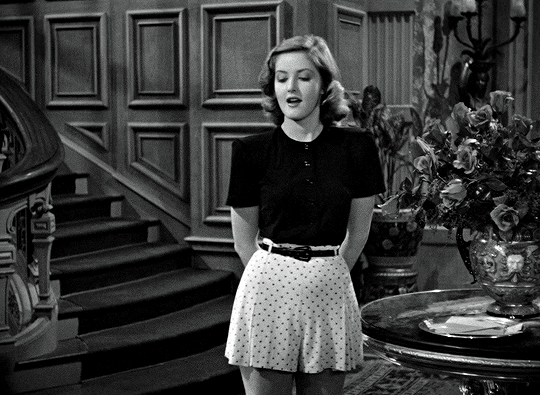

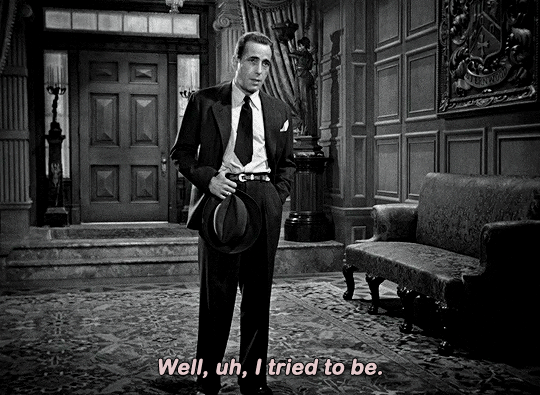

The Big Sleep (1946) dir. Howard Hawks
#movies#The Big Sleep#howard hawks#humphrey bogart#martha vickers#raymond chandler#philip marlowe#carmen rutledge#the film does make some changes to the plot#but not really to carmen's role#although that's revealed without her present#and what marlowe does about it is different#the brasher doubloon#is not a great movie#but george montgomery is so attractive that you can see#why women in these stories react to marlowe as they do#i think he's closer to what chandler intended marlowe to look like#gif#gifset#hateration holleration
3K notes
·
View notes
Text
tuesday again 1/3/2023
VERY pleasing to me that the year starts and ends on a Sunday
mack doesn't know what a calendar is

listening
first song of the year: doja cat's say so (snakehips remix). just a pretty little soap bubble of a song. this is not to say it's insubstantial, bc i do think that doja cat is one of the harder hitters when it comes to production values, just that it's about a soft, ephemeral moment. in an interview i cannot locate she once said "if my songs make you get up and dance i've done my job" and this is very much a staple on my dishwashing playlist
youtube
i've stolen lyrics for a fic (no punches left to roll with) and plan to continue mining this song for fic and chapter titles. stay tuned
-
reading
hat tip to @blysse-and-blunder for reblogging a post about a buckwild academic plagiarism case. here's a short version, here's the long play by play with a bonkers twist in i think part 4.
unrelated: if RetractionWatch ever got real funding and wasn't constantly creaking along on a literal shoestring budget, they're in the top five of orgs i would like to work for. this would require me to be actually connected and qualified tho

-
watching
kicked off the sixth year of starting a new-to-me black and white movie at about ten forty/eleven PM on new year's eve, so i come into the new year watching something good. very important: it has to be a movie i have not seen but i already know i will love. previous years have been: sunset boulevard, yojimbo, the thin man, it happened one night, and bringing up baby. i am predisposed to noir and screwball comedies, but it is very funny that yojimbo kicked off the Cowboy Year and i simply have never looked back. i am reluctant to watch a cowboy movie as the first movie of the year bc they are so wildly varying in quality and i find most black-and-white american westerns afflicted with the hays code. do pre-code westerns exist? yeah. do i want to watch them? no.
this year was The Big Sleep (1946, Hawks), one of The film noirs. films noir?

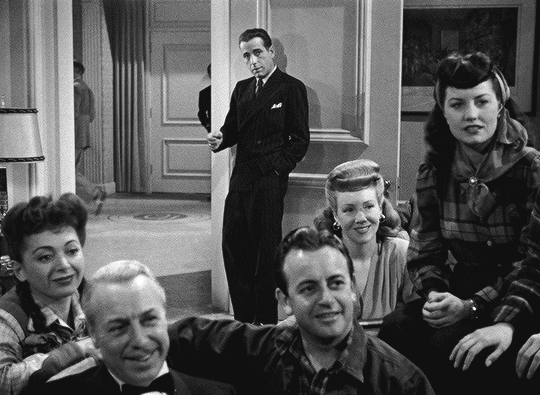
can we bring back inexplicable nightclub scene where the female lead is singing something or performing a dance routine for funsies
more importantly, must a murder mystery be "good" or "comprehensible" or "a successful adaptation of the original novel's core plot"? is it not enough to see two tops, bogart and bacall, flirt at each other for the entire runtime?
pbatengf gb gur guerr (3) crbcyr jub jvyy fyvat guvf vagb ebg13 h trg fbzr Yber: qrfcvgr jevgvat frireny svpgvbany guerrfbzrf v qb abg yvxr gurz vey. v jbhyq znxr na rkprcgvba urer
-
playing
pokémon. we'll see if my opinion changes, bc i have some scheduled medical funtimes over the weekend where i will be lying around and waiting a lot, but i currently don't feel like grinding enough to beat the final boss. got all the way down into the crater! met the final boss! can't be bothered otherwise and i have the bad habit of stopping a game the instant it stops being fun, which is why i have never seen the fallout endgame bc after i unlock all the settlements and decorate them i'm like well! job's done, game's over.
i further can't be bothered to get screenshots off my switch at this moment so look at dragalge who i am really vibing with lately. very shaped. poison/dragon/water moves all in one creature is very helpful
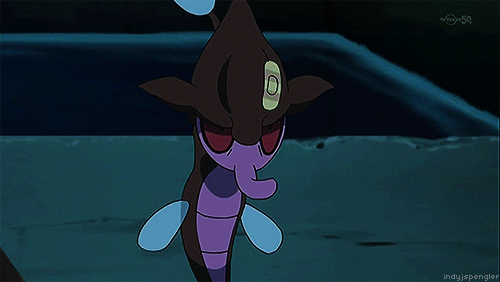
-
making
password manager: i am changing every fucking password i have bc of the lastpass breach :) bitwarden has slightly fewer quality of life features but the free tier more than supports my needs. neither of my siblings uses a password manager aside from the built in chrome and apple ones (upside down smiley face emoji) so we'll save that battle and that family plan purchase for another day.
planner talk: i am outsourcing a greater portion of my brain to the planner as the post-covid fog continues and at this point i honestly think i would rather someone have unfettered access to my journal than unfettered access to my planner. the planner is where most of the living happens. (pro tip: preload birthdays into that thing and then write a reminder a month out to actually find and send off a birthday gift/card/what have you. this makes me feel extremely put together, but there not very many people i actually buy gifts for)
thoughtful gift talk: a related pro tip, if you find whimsical but slightly generic objets d’art at thrift stores and cannot quite justify them for yourself, try throwing them in a big box for those gifts you have previously written yourself reminders about. love a trinket box or a container of some sort to put a slightly more personalized gift in. eg these rabbit glass...lidded trinket dishes? idk they have a proper name but they're rabbit versions of the milk glass hen-on-nest dishes that used to be really popular during the depression. pen and cat for scale

these will probably go off to my sister for her birthday, holding some monogrammed earrings and a cat toy for her cat fern.
i suppose the "generic box of cool stuff but not so cool that you will mourn its loss" could also work for hostess or housewarming gifts if that is a situation that frequently happens to you. i feel a little bit like im showing my hand by sharing these aging tumblr population tips bc i had to derive them all from first principles but there is no need for YOU, gentle reader, to reinvent the wheel along with me.
30 notes
·
View notes
Note
I feel like you’re the one to ask. What are the sexiest Old Hollywood films? 🥰💞
i love that you came to me with this question 😭✌🏻 there are tons i’m sure but this is what i’ve got~~~
(note that practically none of these are examples of healthy relationships but godDAMN there are some scenes in these 🥵)
♡ the long, hot summer (1958)
♡ gilda (1946)
♡ notorious (1946)
♡ paris blues (1961)
♡ jewel robbery (1932)
♡ how to steal a million (1966)
♡ the more the merrier (1943)
♡ one touch of venus (1948)
♡ camille (1936)
♡ if a man answers (1962)
♡ it happened one night (1934)
♡ what a way to go! (1964)
♡ honky tonk (1941)
♡ johnny eager (1941)
♡ cat on a hot tin roof (1958)
♡ the big sleep (1946)
♡ out of the past (1947)
♡ from here to eternity (1953)
k i’m drawing a blank now but i’m positive there are more so if you know some comment them!!
63 notes
·
View notes
Text

John Wayne and Montgomery Clift in Red River (Howard Hawks, 1948)
Cast: John Wayne, Montgomery Clift, Joanne Dru, Walter Brennan, Colleen Gray, Harry Carey, John Ireland, Noah Beery Jr., Harry Carey Jr., Chief Yowlatchie, Paul Fix, Hank Worden. Screenplay: Borden Chase, Charles Schnee, based on a story by Chase. Cinematography: Russell Harlan. Art direction: John Datu. Film editing: Christian Nyby. Music: Dimitri Tiomkin.
You know those social media posts that ask you to name the movies you've watched more than five times that you would still watch again? I don't respond to them because there are too many movies that fit the category for me, but Red River would certainly be on my list. Each time I watch it, I have a little different reaction. Sometimes, for example, I'm glad when the character of Tess Millay (Joanne Dru) shows up, because it's kind of a relief from all that male bonding of the cattle drive. Other times, she annoys me. She's the "Hawksian woman" of the movie, the character embodied so well by Jean Arthur in Only Angels Have Wings (1939), Rosalind Russell in His Girl Friday (1940), and especially Lauren Bacall in To Have and Have Not (1944) and The Big Sleep (1946). The Hawksian woman talks back to men, asserting her place in the world they dominate. But Tess Millay just talks, and even talks about how much she talks. Moreover, she's obviously there primarily to serve as a reincarnation of Fen (Colleen Gray), the woman whom Tom Dunson (John Wayne) loved and lost when he left the wagon train at the beginning of the movie. Still, even this bit of unnecessary narrative linkage is forgivable in a movie that offers so much. There is, of course, what I think of as Wayne's best performance as Dunson -- some prefer his work in The Searchers (John Ford, 1956), which I find too artfully staged by Ford. Here he shows he can do everything from Hawks's characteristic swiftly overlapping dialogue to the paranoid trail-boss martinet to the tough guy hiding his tender side. And there's Montgomery Clift's remarkable movie debut as Matthew Garth; Red River was filmed before The Search (Fred Zinnemann, 1948), though the latter was released first. Clift, who was stage-trained, seems to have instinctively learned that movie acting is done in large part with the face, and he uses his eyes particularly expressively -- he reminds me of the great silent film actors in that regard. The scene in which Garth and Cherry Valance (John Ireland) handle each other's guns is one of the great homoerotic moments in movies, but it's prepared for by the way Clift and Ireland look at each other when they first meet, sizing each other up. And then there's one of the great supporting casts in movies, including Walter Brennan, Noah Beery Jr., and a whole lot of cattle. (Hawks, who also produced the film, graciously gave Arthur Rosson, the second unit director in charge of the cattle drive scenes, a co-director credit.) Dimitri Tiomkin's music added immeasurably to the film, but surprisingly went unnominated by the Academy, which took notice only of Christian Nyby for editing and Borden Chase for the film's story. (It was based on his story in the Saturday Evening Post, and was turned into a screenplay by Charles Schnee -- though a lot of the dialogue is so Hawksian that I suspect the director deserved a screenplay credit, too.) Naturally, like most Hawks films, it won no Oscars.
6 notes
·
View notes
Photo
Dorothy Malone and Humphrey Bogart in a scene from The Big Sleep (1946)
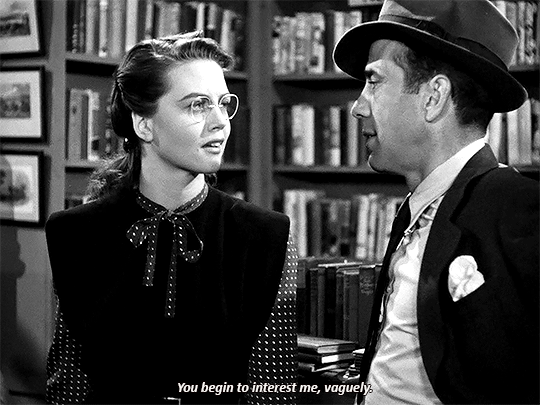
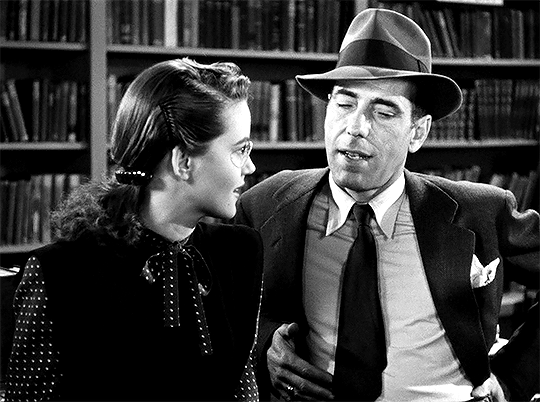
697 notes
·
View notes
Text
In Honor of Bogey
Born on Christmas Day at the turn of the century, the acting legend Humphrey Deforest Bogart is considered the greatest male acting icon of the Golden Age of Hollywood. He was an early Christmas gift to the 20th century and eventually was recognized by the AFI as the greatest male star of classic American cinema. This is quite a title to hold with all the great actors of the last one hundred years, so I wanted to take a little space in my analysis of the AFI top 100 to recognize this acting icon.
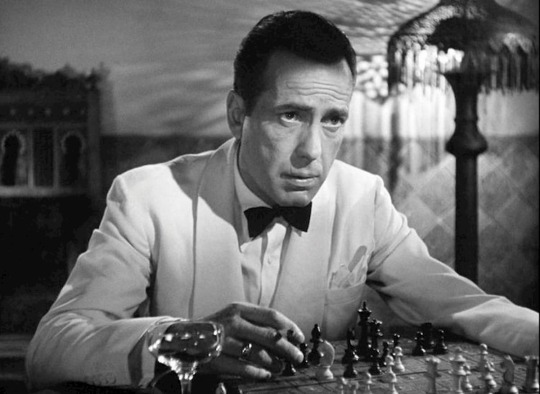
He was a kid with a lot of potential and intelligence, but his parents were not very affectionate (according to him) and he grew up with a chip on his shoulder. He went to some prestigious East Coast schools but was expelled or left on many occasions and ended up in the Navy. He joined up following the end of WWI and was part of the time of American Military glory. He loved it. He even tried to re-enlist when WW2 broke out, but he was too old and was instead registered as a volunteer reserve with the Coast Guard. He didn't get started in films until 1930, but started stage acting after his naval service in 1921. He might have gotten his trademark scar on his lip while in the Navy, but he got in a lot of scraps so it is not really certain where it came from.
Scars aside, Humphrey Bogart was a very good looking person that just exuded the ideal of manliness for the time. He started playing roles of young impetuous men and moved on to gangsters and villains. He did some work with James Cagney in a film called The Roaring Twenties. He met many woman with his star power and brutish manliness, marrying 4 times over his life before finally settling down with the fabulous Lauren Becall in 1945. He was part of the famous "Rat Pack" of the 50s. He was just so cool.
Since this is part of the AFI top 100 review, I want to cover the four movies on the list he was in as well as a couple other American classics:

High Sierra (1941) - Nominated for AFI Top 100 but not ranked
This was a big opportunity for Bogart because it was a leading gangster role written by his drinking buddy John Huston. The part had been turned down by some of the great actors of the time, including James Cagney. Bogart had been getting a lot of small roles and appeared in as many films as he could at the time (he is credited in 20 movies between 1937 and 1939), but this was a big break as a leading man. He worked alongside Ida Lupino, which caused jealousy issues with his wife at the time, Mayo Methot.

The Maltese Falcon (1941) - AFI #31
This was a career starter for Bogart as the no nonsense anti-hero with a chip on his shoulder and a heart of gold. This film was also turned down by other more established leading actors (George Raft) because it was a remake of the same story that was done in 1931. He played the part of Sam Spade (great name), a detective in search of a bejeweled object while getting in way over his head. Bogie had a great smoky voice and his film noir narratives set the standard for the genre. It was also the directorial debut of John Huston. Humphrey Bogart was known for downplaying his work (such a hipster), but this was a film for which he openly showed pride.

Casablanca (1942) - AFI #3
This was Bogart's first real romantic lead as an expatriate in Africa at the outbreak of WWI. As far as my generation is concerned, this is his most famous role and cemented the man as a Hollywood icon. This movie won Best Picture and got him nominated for Best Actor, vaulting Bogart past James Cagney as the highest paid actor in Hollywood at the time (half a million a year; that is nothing to sneeze at now much less right after the Great Depression).

The Big Sleep (1946) - Not on AFI Top 100
This was arguably the most well known of the four movies that Bogart starred in with Lauren Bacall. His wife at the time, Methot, was jealous and was afraid that Bogart was cheating on her. He was. He and Methot got a divorce and he almost immediately married Bacall. Bogart also got a little bit weird at the time because he tried to sign up for the Navy and then bought a yacht, allowed use of it by the Coast Guard, and then patrolled around the California coast with numerous weekends around Catalina. The film was actually scheduled to be released in 1945, but had a bunch of scenes of sexual innuendo added in to play up the real life relationship of Bogart and Bacall.
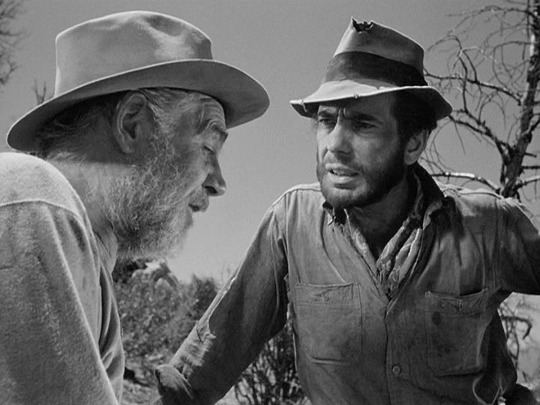
The Treasure of the Sierra Madre (1947) - AFI #38
This was a film that showed the genius of Huston's writing and Bogart's acting. It was a chance to for Bogart to show off his grittiness and willing to suffer for his art. He character was one of three greedy men with stake on a gold claim that was more than enough for all three, but constant fear of backstabbing (literally and figuratively) causes problems. The movie was filmed in the Sierras during the summer heat and Bogart looked pretty bad. The movie lacked a love interest and highlighted dissension amongst a group, so Huston and Bogart (an outspoken liberal democrat) were mentioned in the Un-American Activities trial that was looking for Communists. Bogart wrote an article entitled "I'm No Communist" and distanced himself from anyone accused, but still had a slight reputation for being outspoken about first amendment rights.
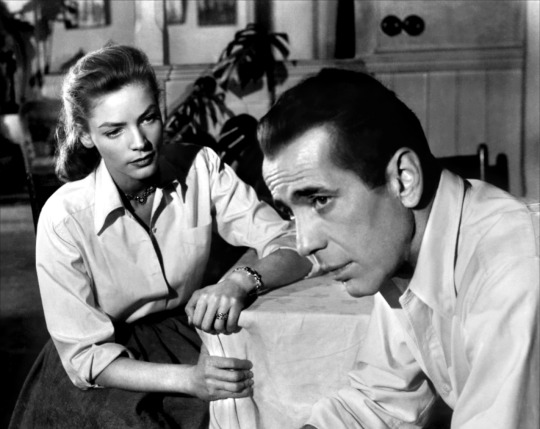
Key Largo (1948) - Not on AFI Top 100 but nominated for AFI Top 10 Gangster Films
The last film that featured the couple. In this movie, their characters were stuck in a Florida hotel during a hurricane. It was another John Huston directed film noir and featured Bogart's character boating around and taking out gangsters one by one. There is a somewhat racist subplot of hunting down some wanted Native Americans that a known gangster pins a murder on. That aspect of the movie always bothered me. A real standout that somewhat upstages Bogart (interestingly enough with his help) is actually the gangster's girlfriend who sings a song for the group to earn a drink. She plays a great part as a woman attracted by the villainous lifestyle and then becomes trapped in an abusive relationship. Actress Claire Trevor, who Bogart liked very much and encouraged throughout the film, won Best Supporting Actress for her part in the story.

The African Queen (1951) - AFI #65
Maybe the film with the most star power during the Old Hollywood Era, this film starts Katharine Hepburn and Humphrey Bogart, perhaps the two biggest stars of American film. It was his first film in Technicolor and the role won him his one and only Oscar for Best Actor. The film was shot in the Belgian Congo and once again proved Bogart's toughness. This was again a John Huston directed film and it is interesting that both of the stars of the film had friends in very high places that kept them acting in great roles: Humphrey Bogart had John Huston and Katharine Hepburn had Howard Hughes. I want to note that, in my humble opinion, this was neither actors best work but they both were given a lot of credit for braving the elements and appearing on screen looking haggard.

The Cain Mutiny (1954) - Nominated for AFI Top 100 but not ranked
This was the last film that Bogart was relatively happy with, although he had to drop his salary to get the part and he was bitter about it. The part of a paranoid captain earned the actor his final Oscar nomination, but it did not really bring the same satisfaction as earlier roles. Huston wrote Bogey's characters as a loner and an antihero with an internal warmth and humor. This character did not have the charm that exuded from Bogart, the person.
----------------------------------------------------------------------------
Humphrey Bogart continued with high profile roles like starring with Aubrey Hepburn in Sabrina (1954) and Ava Gardner in The Barefoot Contessa (1954), but he was starting to get sick from a life of smoking and drinking. He was also in his mid 50s and couldn't play that charming young loner that he was so famous for. He had started to come across as old and didn't have his youthful charisma. He really hated working with Billy Wilder and didn't want to be the distinguished older gentleman in Sabrina. He didn't want to work with Ava Gardner because she had just broken up with his drinking buddy, Frank Sinatra. These films were successful and Bogart was a true professional, but I would not call it his best work by any means.
Humphrey Bogart was a great actor and a true Hollywood icon. Through research and watching interviews, I don't think that he would have been somebody that I liked personally because he drank and smoked heavily while enjoying arguments and confrontation. He came off as a bit of a contrarian in his later interviews and that is something that has bothered me. Don't meet your heroes. It does not lessen his accomplishments as an actor nor does it reduce the number of great films he has starred in. Just because he wouldn't be my best friend doesn't mean he wasn't a great man. I still believe that he deserves the AFI honor of being Hollywood's most famous actor. Check out some of his works and see what you think.
#humphrey bogart#bogey#john huston#lauren bacall#key largo#casablanca#the caine mutiny#sabrina#katharine hepburn#the maltese falcon#the treasure of the sierra madre#introvert#introverts
45 notes
·
View notes
Text
The Big Sleep
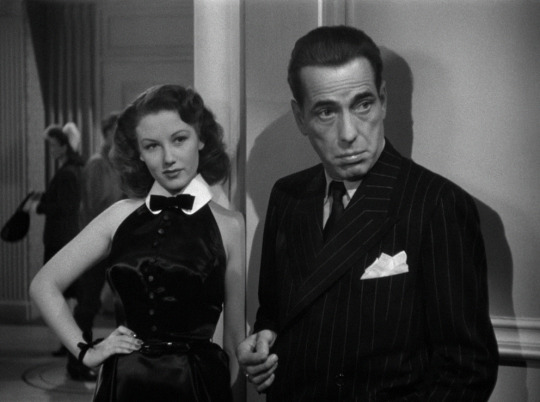
View On WordPress
Humphrey Bogart as detective Philip Marlowe in a nightclub scene from The Big Sleep (1946)
27 notes
·
View notes
Text
Many have tried to figure out exactly who did what to whom in Howard Hawks's The Big Sleep. Screenwriters William Faulkner, Leigh Brackett, and Jules Furthman are said to have consulted Raymond Chandler, the author of the novel they were adapting, about certain obscurities of the plot, and Chandler admitted that he didn't know either, which is as fine an example of being "in uncertainties, mysteries, doubts, without any irritable reaching after fact and reason," which Keats called "negative capability." So ask not who killed the Sternwoods' chauffeur, or even who really killed Shawn Regan -- if, in fact, Regan is dead. This is one of the most enjoyable of films noir, if a movie that has so many sheerly pleasurable moments can really be called noir. It's also one of the most deliciously absurd -- or maybe absurdist -- movies ever made, including its persistent presentation of Humphrey Bogart's Philip Marlowe as an irresistible hunk, who has bookstore clerks, hat check girls, waitresses, and female taxi drivers swooning at his presence. The only thing that makes this remotely credible is that Lauren Bacall, and not just Vivian Sternwood Rutledge, actually did. In his review for the New York Times, Bosley Crowther, one of the most obtuse critics who ever took up space in a newspaper, called it a "poisonous picture" and commented that Bacall "still hasn't learned to act" -- an incredible remark to anyone who has just watched her exchange with Bogart ostensibly about horse racing. This is, of course, one of Howard Hawks's greatest movies, and of course it received not a single Oscar nomination -- not even for Martha Vickers's delirious Carmen Sternwood. Vickers was so good in her role that her part had to be trimmed to put more focus on Bacall, who was being groomed for stardom. Sadly, Vickers never found another role as good as Carmen. Dorothy Malone, who did go on to stardom and an Oscar, steals her scene as the bookstore owner amused and aroused by Marlowe's charisma. And then there's Elisha Cook Jr. as a small-time hapless hood not far removed from the Wilmer who stirred Sam Spade's homophobia in The Maltese Falcon (John Huston, 1946). Except this time his demise elicits something from Marlowe that Spade was incapable of: pity.
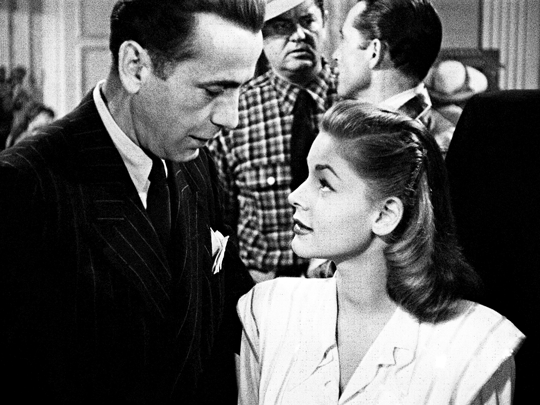
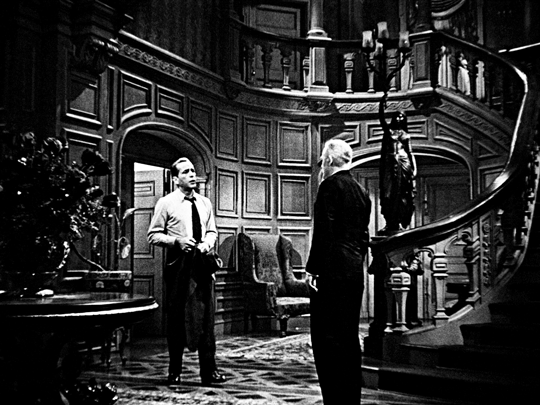
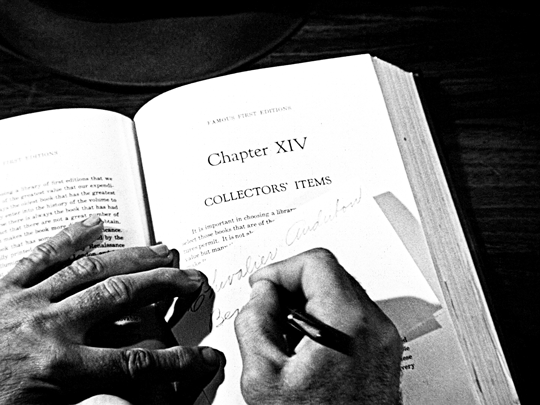
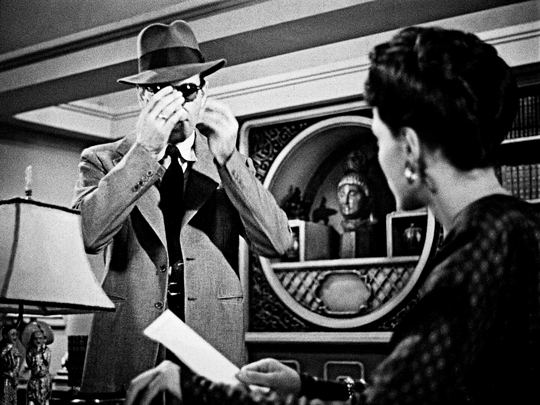
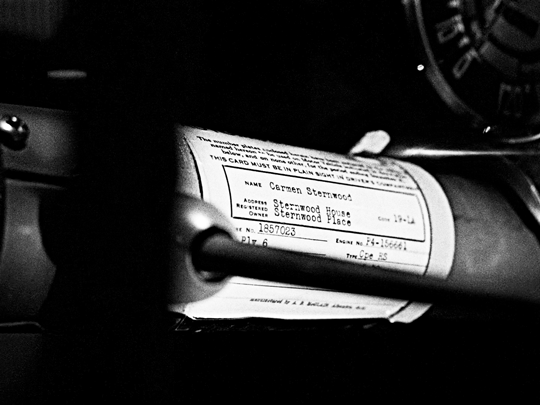
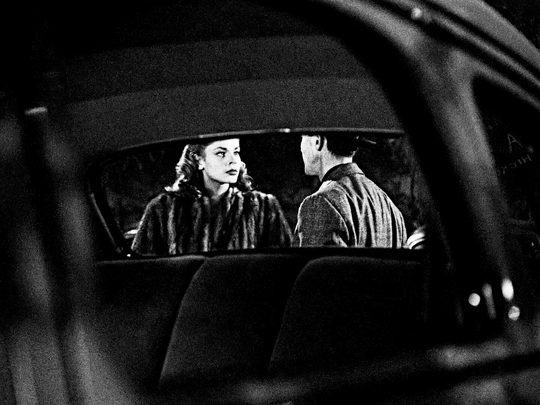
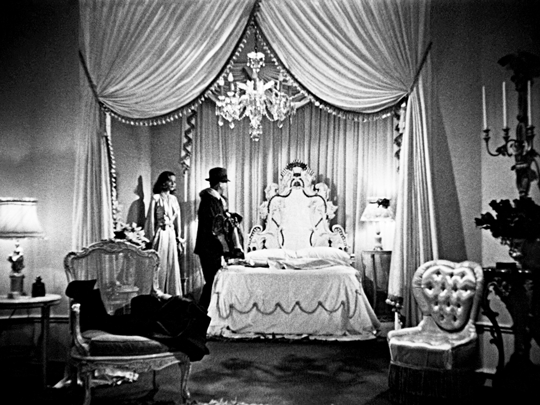

What's the matter? Haven't you ever seen a gun before? What do you want me to do, count three like they do in the movies? THE BIG SLEEP (1946) dir. Howard Hawks
454 notes
·
View notes
Text
SMASH-UP: Alcoholism in Cinema By Jessica Pickens
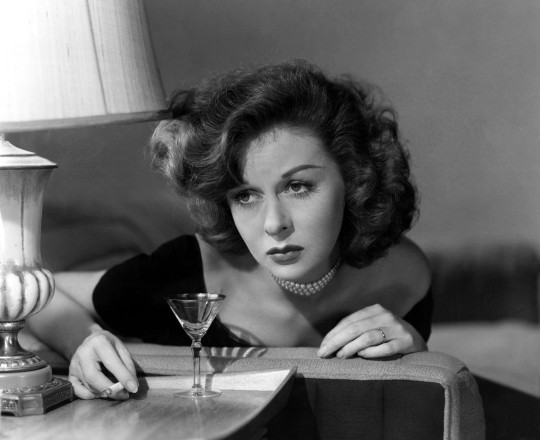
Whether it’s a flapper dancing with a bubbling glass of champagne or a funny drunk in a tuxedo, imbibing has been depicted several different ways since the dawn of film. In the 1920s and 1930s, drinking was often used as comedy — the funny drunk doing funny things. But occasionally, alcoholism was seen in a more serious light. A STAR IS BORN (’37) showed that even the wealthiest and most successful people had their demons.
One of the first films to show alcoholism as a social issue was THE LOST WEEKEND (‘45) starring Ray Milland. And with the success of the Billy Wilder-directed film, several other pictures focusing on the issue followed. Two years after Wilder’s Oscar winner, came one of the first films focusing on a woman as an alcoholic: SMASH-UP: THE STORY OF A WOMAN (’47) starring Susan Hayward, Lee Bowman, Eddie Albert and Marsha Hunt.
The film follows rising singing star Angelica “Angel” Evans, played by Susan Hayward, who puts her career on the backburner when she marries singer Ken Conway, played by Lee Bowman. Angel puts all of her energy into Ken’s career, and her agent is disappointed that she is throwing away her talent. Soon after their marriage, Angel gets pregnant and Ken gets a job as a singing cowboy on an early morning radio program.
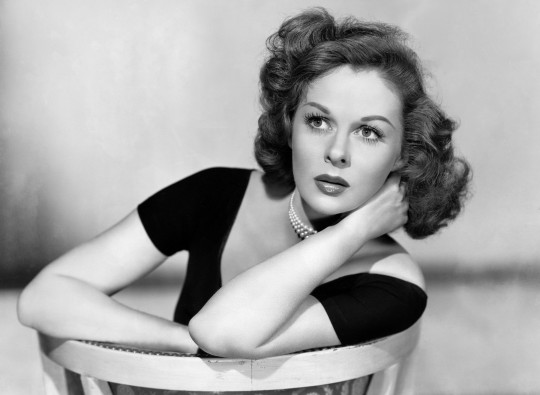
After Angel gives birth, Ken performs the song “Life Can Be Beautiful” over the radio for his wife and baby. The performance immediately catapults him into fame, and he is the new singing sensation. Stardom brings big parties, overnight trips and a beautiful secretary named Martha Gray, played by Marsha Hunt. But as Ken walks in the clouds, Angel is spiraling out of control. The parties and big crowds make her anxious, and she is jealous of Martha. She turns to alcohol for relief. Ken frequently finds her passed out and she makes a scene at parties. At one point, Angel begs Ken for help, but he is unsympathetic.
“I read someplace, it said these are the three worst things: to lie in bed and sleep not; to wait for one who comes not; to try to please and please not. They all fit me, don't they?” Angel laments.
Interestingly, a doctor in the film notes that Angel’s trouble is a disease and not simply a desire to drink. The role of Angelica Evans brought Hayward her first of five Academy Award nominations for Best Actress in a Leading Role. (Hayward finally won for her 1958 role in I WANT TO LIVE!). It also was one of her first serious leading lady roles. But despite the career accolade, SMASH-UP was met with some controversy.

Before shooting started, Hollywood censor Joseph I. Breen tried to stop production, because he didn’t like the trend of alcohol-focused films following The Lost Weekend. Of Smash Up, Breen said, “Showing a drunken woman moving about is both distasteful and repulsive, and the sound moral to your story will be forgotten in the reaction of disgust,” according to Thomas Doherty’s book Hollywood's Censor: Joseph I. Breen and the Production Code Administration.
But the real controversy came when similarities were noted between the characters of Lee Conway and Angelica Evans to real life celebrities, husband and wife Bing Crosby and Dixie Lee. When Crosby and Lee married in 1930, Lee was already a singer and acting in films, and Crosby’s career was climbing. Unlike, SMASH-UP, Lee’s career continued, though she eventually retired from show business in 1936. In the film, Ken calls Angelica “Angel,” which was also Lee’s nickname for Crosby. Six months into their marriage, Lee told an Associated Press reporter that they were going to separate, because they never saw each other and Crosby enjoyed the nightlife. Lee would stay home waiting for him and drinking to get herself to sleep, according to Bing Crosby biographer Gary Giddins in his book, Bing Crosby: A Pocketful of Dreams - The Early Years 1903 – 1940. Crosby and Lee remained married until her death in 1952.

Despite the similarities, producer Walter Wanger “vehemently denied” that Smash Up: The Story of a Woman was about the Crosbys. However, the comparison was strong enough that Crosby considered a lawsuit, but his attorney John O’Melveny advised against suing. The Crosbys were considered one of Hollywood’s perfect couples and O’Melveny said the public would never make a connection. Legal action would only draw attention to themselves, as noted in Giddins’ Bing Crosby: Swinging on a Star: The War Years, 1940-1946.
SMASH-UP: THE STORY OF A WOMAN failed to do well in the box office, losing $111,664. Regardless of who SMASH-UP is about — or isn’t about— the screenplay written by Dorothy Parker and Frank Cavett is a heartbreaking look at substance abuse. Films like SMASH-UP were able to shift moviegoers perception on drinking depicted in cinema. The topic of alcoholism switched from a punchline to shining light on a serious issue that still resonates today.
96 notes
·
View notes
Text
My Top 5 Film Noirs for Newbies
Well hello there my friends! It’s #Noirvember and I realized not everyone has experienced a Film Noir film (how could that be?! Some of the best films out there are Film Noir). So I decided to make a Top 5 list of Film Noirs for those who have no clue what these films entail or want to start enjoying them this #Noirvember.
A/N: I am not saying these are the BEST Film Noirs ever made, but some that I feel are good starters into the genre. I might make a top 10 list of my favorite Film Noirs later one.
1. The Big Sleep (1946)
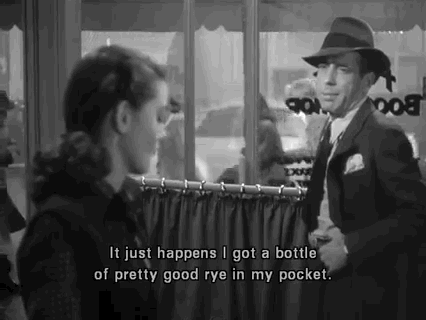
Starring Humphrey Bogart, Lauren Bacall, Martha Vickers, John Ridgely, and Charles Waldron
Synopsis: A general hires a private investigator to figure out who is blackmailing his daughter.
It’s always good to watch one of the Bogart/Bacall films and considering that this Film Noir has both of them, you know there is a good amount of flirting and sexuality (but let’s be real, the spiciest scene is with Dorothy Malone at the bookstore). Now sometimes Film Noirs have a lot going on, and this is one of those. The plot might not make complete sense, but this is a good watch because it’s kinda fun to see the chaos.
2. Gun Crazy (1950)
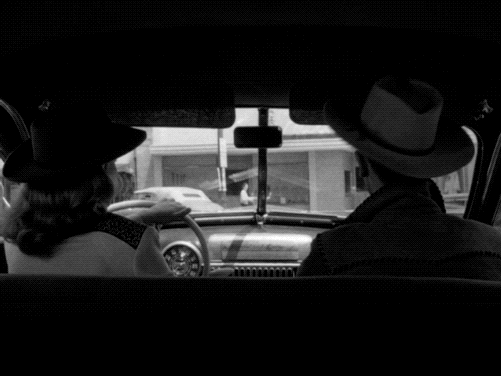
Starring John Dall, Peggy Cummins, Annabel Shaw, Nedrick Young, and Harry Lewis
Synopsis: A sharpshooter is persuaded into a life of crime by his marksman wife.
Gun Crazy was a B Film when it came out - meaning it was low budget and was really made just for entertainment purposes. WHAT A GREAT GEM THOUGH!!! This film was blessed by being a B Film because it is filled with crime, sex, and passion - something that wouldn’t get by in this capacity if it were a huge studio film. John Dall and Peggy Cummins are electric together and that alone makes this film worth watching.
3. They Live by Night (1948)

Starring Cathy O’Donnell, Farley Granger, Howard Da Silva, and Jay C. Flippen
Synopsis: An escaped convict falls in love with the women who nurses him back to health after an injury. However, their love story seems to be doomed from the start.
This is probably my favorite Film Noir EVER. Farley Granger is just so smooth and charming. He plays the perfect victim of circumstance. I also like how there is an innocent yet passionate love between his character and Cathy O’Donnell’s. I literally can watch this film anytime and any place.
4. Leave Her to Heaven (1945)
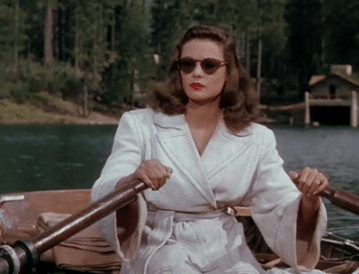
Starring Gene Tierney, Cornel Wilde, Jeanne Crain, and Vincent Price
Synopsis: A woman’s obsession with her writer husband threatens to ruin both of their lives.
The Technicolor in this film makes it so BEAUTIFUL to watch. Usually you imagine Film Noirs being in black and white, but alas, here we are. Also Gene Tierney plays one of the meanest femme fatales one can encounter in these types of films. She is so nasty and it is so entertaining to watch how far she will go to make sure no one else gets close to her husband.
5. Gilda (1946)

Starring Rita Hayworth, Glenn Ford, George Macready, and Joseph Calleia
Synopsis: A gambler hired to work in a casino in Buenos Aires realizes his employer is married to his ex.
Rita Hayworth and Glenn Ford are ELECTRIC in this film. That alone makes this film worth watching. Can the plot get a little confusing? Yes, but that doesn’t matter because this movie is so amazing to watch. Also, Rita Hayworth’s “striptease” is so iconic that you have to watch this movie at least once.
#noirvember#the big sleep#humphrey bogart#Lauren Bacall#martha vickers#gun crazy#john dall#peggy cummins#they live by night#Farley Granger#cathy o'donnell#leave her to heaven#gene tierney#cornel wilde#jeanne crain#vincent price#gilda#rita hayworth#glenn ford#george macready#turner classic movies#classic film#film#movies#film review
243 notes
·
View notes